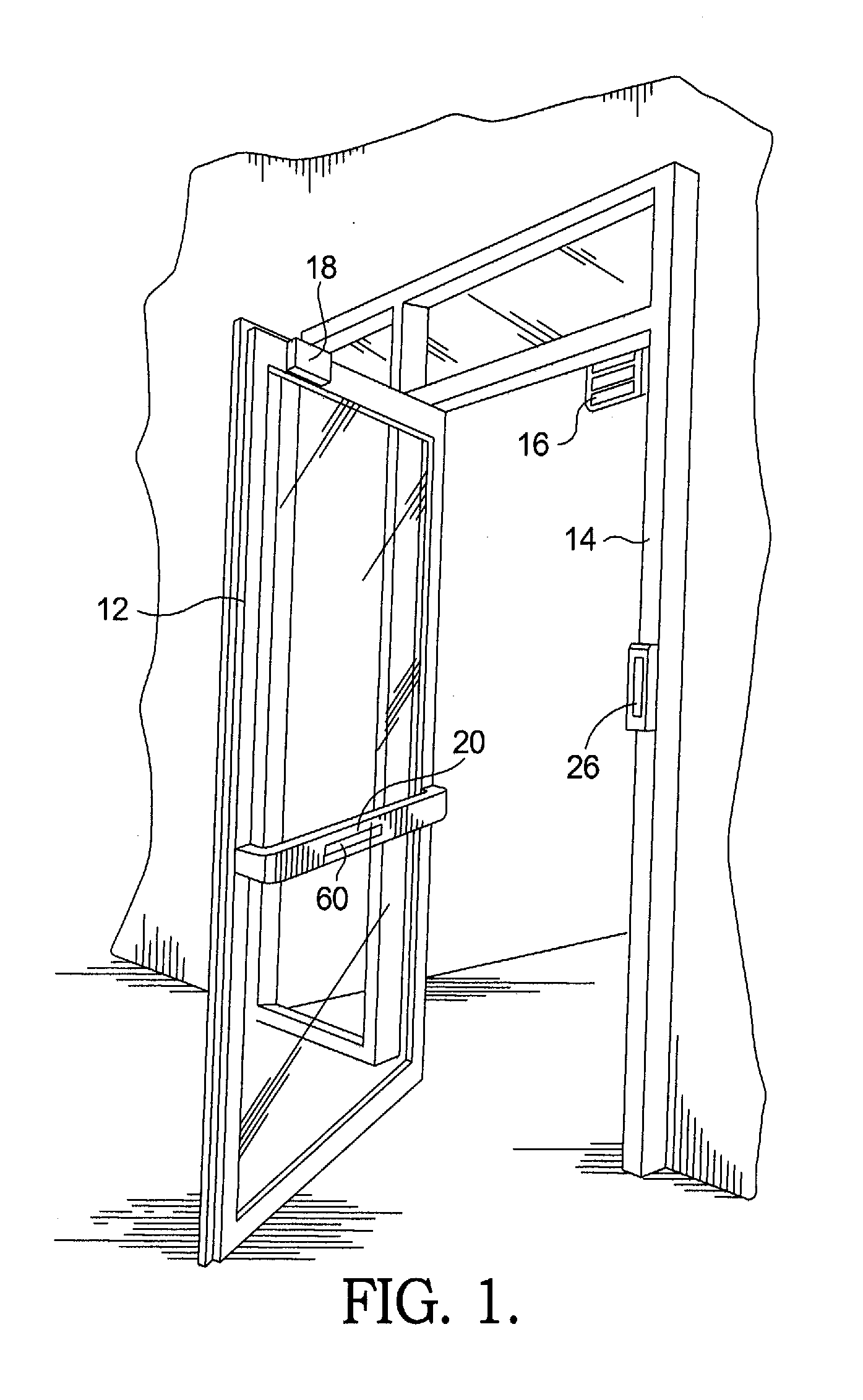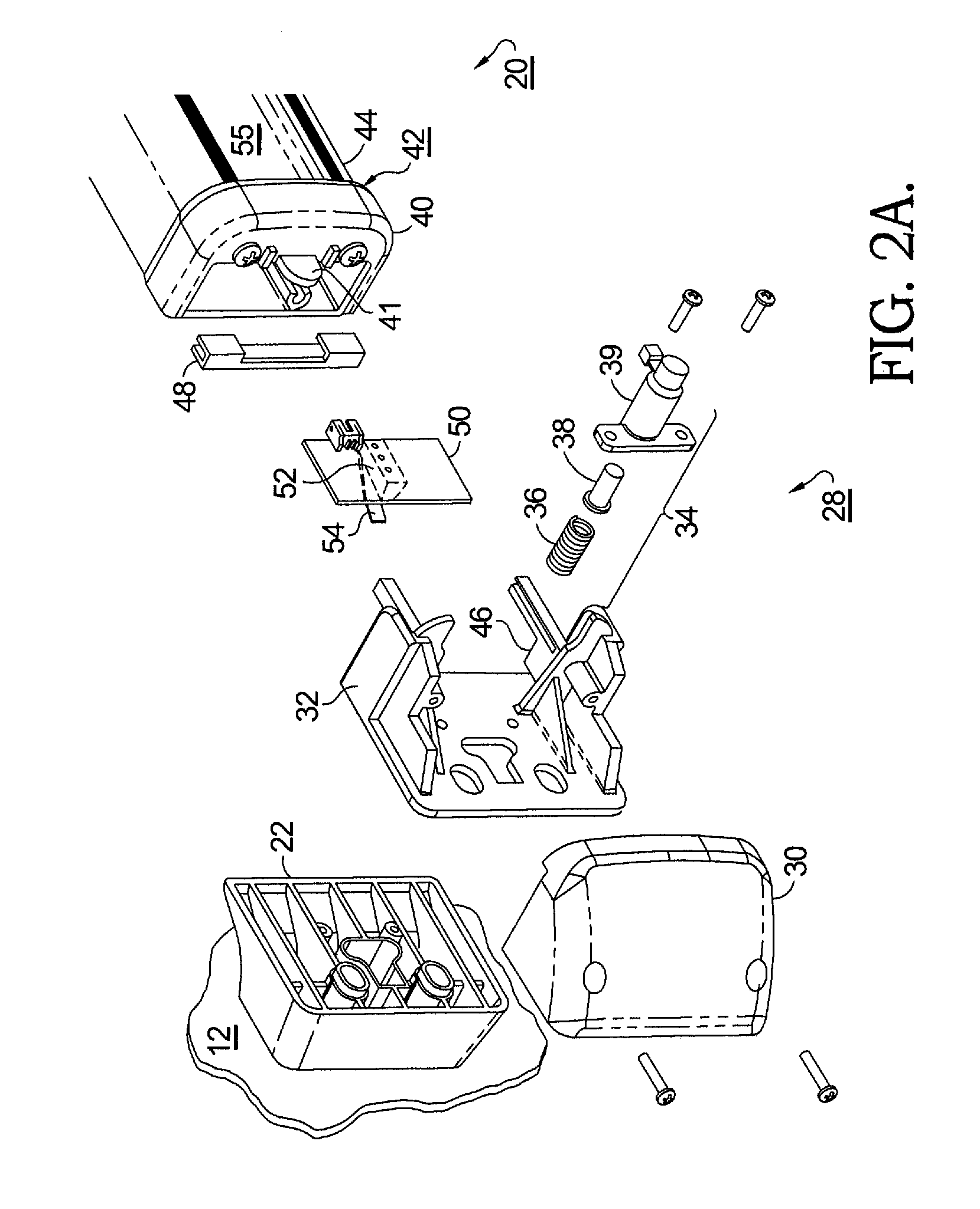Access Control Device for a Door
a technology for access control devices and doors, which is applied to door/window accessories, wing knobs, wing accessories, etc., can solve the problems of user memory loss, door to be unlocked, and potentially allowing ingress from the outside, so as to simplify use and facilitate access
- Summary
- Abstract
- Description
- Claims
- Application Information
AI Technical Summary
Benefits of technology
Problems solved by technology
Method used
Image
Examples
Embodiment Construction
[0025]Referring to the drawings, FIG. 1 shows a door 12 and a door frame 14. Secured to the door frame is an electromagnet 16 which, together with the striker plate or armature 18 on the door forms an electromagnetic lock. On the inside of the door and mounted thereon is a door release system 20 in accordance with the present invention, mounted to door 12 by insulating blocks 22 used to electrically isolate the bar assembly from the door (FIGS. 2A, 2B and 3). In order to gain access to the interior of the secured area, inside door 12, a coded input panel 26 (FIG. 1) may be provided.
[0026]However, when egress from the secured area on the interior of the door 12 is desired, a person merely touches or pushes against system 20 and the result is to release the electromagnetic lock 16, 18, so that the door 12 may be pushed open.
[0027]The precise method of de-energization of the electromagnetic lock 16, 18, will be discussed in greater detail below.
[0028]Referring to FIG. 2A, 2B and 3, an ...
PUM
 Login to View More
Login to View More Abstract
Description
Claims
Application Information
 Login to View More
Login to View More - R&D
- Intellectual Property
- Life Sciences
- Materials
- Tech Scout
- Unparalleled Data Quality
- Higher Quality Content
- 60% Fewer Hallucinations
Browse by: Latest US Patents, China's latest patents, Technical Efficacy Thesaurus, Application Domain, Technology Topic, Popular Technical Reports.
© 2025 PatSnap. All rights reserved.Legal|Privacy policy|Modern Slavery Act Transparency Statement|Sitemap|About US| Contact US: help@patsnap.com



